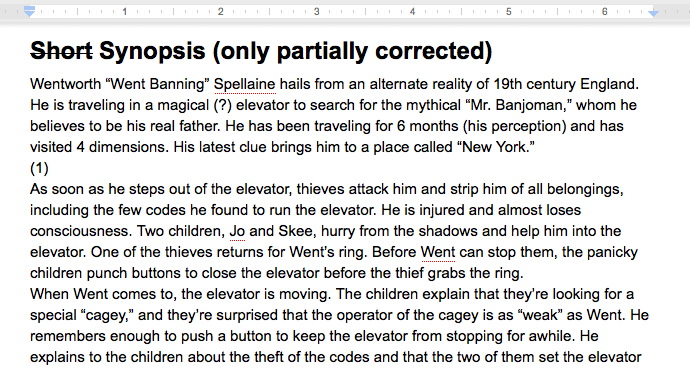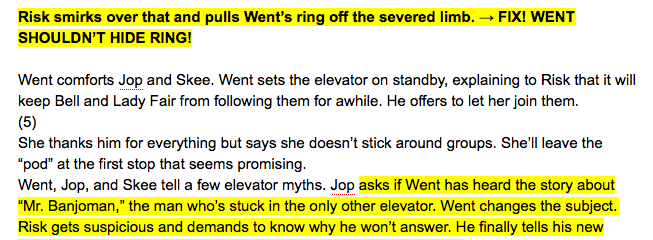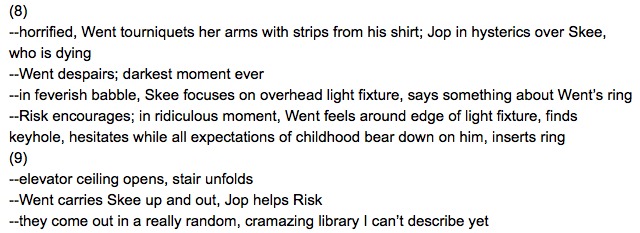 Once upon a time, I started my series of posts on prewriting with a comparison to Tolkien’s The Hobbit. In that comparison, I posited the following:
Once upon a time, I started my series of posts on prewriting with a comparison to Tolkien’s The Hobbit. In that comparison, I posited the following:
Writing a novel is like joining a passel of dwarves on a quest to kill a dragon.
Neglecting your prewriting is like arriving at the dragon’s doorstep without the handy map that shows you how to sneak in the back door.
The result is getting fried to a cinder before you can write your happy ending.
As recently as “The Short Synopsis,” I mentioned that whilst engaged in your prewriting, you need to play around with it and make it useful to you. Add notes here and there. Delete things (or, rather, strikethrough, because you never know when you might need something). In my mind, this is equivalent to turning your map upside down or sideways to get a different perspective on your route.
Speaking of the short synopsis, it’s probably the best example I have of how I personally repurpose prewriting as I go along.
Making a Mess
My current WIP, Elevator People (working title), once boasted a short synopsis of just over 300 words. As you can see below, it didn’t stay “short” for long:
At some point after diving into writing the actual story, I referred back to my short synopsis and realized that I wanted more detail. So, as needed, I fleshed out characters, described more action, and even broke down the synopsis chapter-by-chapter. And then I struck through “Short” in the synopsis title. As one does.
Eventually, I relied less and less on my synopsis, drawing instead on memory and letting the characters determine the direction of the story. The next time I skimmed the synopsis, I realized three things:
1. The story had gone off on a tangent that wasn’t in the synopsis.
2. Some of the changes were good.
3. Some of the elements of the original synopsis still needed to be in the story.
What to do? I didn’t want to take the time to rewrite the entire synopsis. That sounded like just so much busywork, and besides, I was nose-deep in this story I was having so much fun writing. Thus, instead of rewriting the whole synopsis, I highlighted the things I’ll need to go back and change in the story after I’ve finished the first draft:
And now, you see why in the first image, there’s an “only partially corrected” following the title.
Over the course of several months, my synopsizing (can I say that? it’s so much more fun than “synopsis-writing”) devolved from the penning of sentences to the simple jotting-down of bullet points as they occurred to me:
As for the story itself, I’m now in the final chapters but haven’t yet caught up to the notes in the image above. Some of those plot points will make it into the story, some won’t. I’ve made a little bit of chaos out of my once organized synopsis–but at least it’s organized chaos, and I can harness it anytime I need it.
Musing on the Mess
What I’ve done with my short synopsis I also do with the rest of my prewriting package. I revise chapter titles to inspire novel scenes. I rework my list of scenes and sequels (there’s not a post on those, yet, but we’ll get to it). I add to my character descriptions as the story reveals more nuances about my story people.
In navigating the world of your writing and the world of your story specifically, you often need a fresh look at the topography. Turning your map upside down–molding and remaking your prewriting–gives you that fresh look. As I’ve said before, us your prewriting material however you need to. Make it work for you. Run with it!








